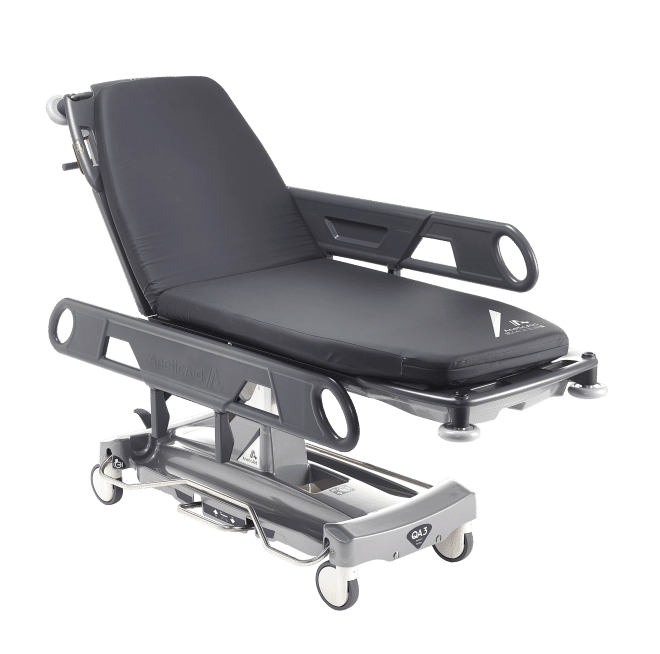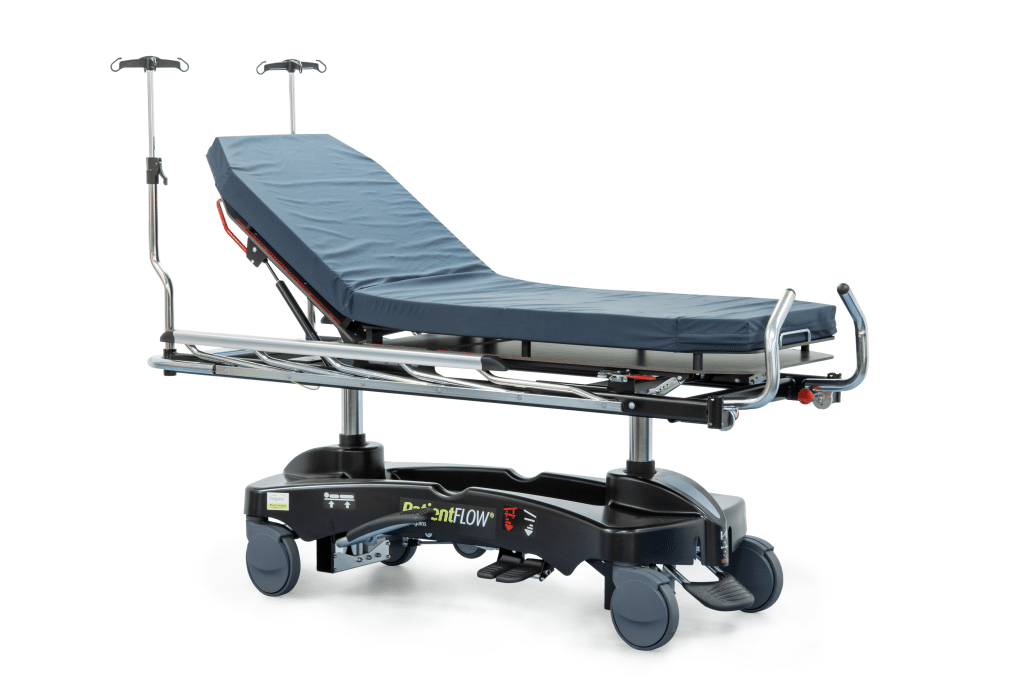AneticAid QA3 Patient Stretcher vs PatientFlow Stretcher; an honest comparison
There are a large number of patient stretchers on the market, each with various positives and drawbacks, and some with special functions, and subsequently, choosing the correct patient stretcher for your hospital can be a daunting and time-consuming task.
The purpose of this article is to compare one of the most well-known stretchers on the market; the AneticAid QA3 Stretcher, with the Felgains PatientFlow stretcher, covering the key features, positives, and drawbacks of each, to make your decision-making process easier and to enable you to make the best decision for your hospital.
Key features comparison table
|
Felgains PatientFlow |
AneticAid QA3 Patient Stretcher | |
| Safe Working Load | 320kg | 320kg |
| Lowest Height (mm) | 550 | 475 |
| Highest Height (mm) | 850 | 775 |
| Patient Surface Size (mm) | 700 x 1950 | 700 x 2150 |
| Weight of stretcher | 102kg | 128kg |
| Warranty | 2 years | 1 year |
| ISO 60601-2-52 compliant side rails? | Optional | Yes |
| Power drive assist available? | Yes | Yes |
| X-ray tunnel available? | Yes | Yes |
What is the AneticAid QA3 Patient Stretcher?

The AneticAid QA3 is designed to be compact, lightweight and manoeuvrable. Ideal for patient transport, examination and intubation in theatre and clinical areas, the QA3 is robust and combines maximum patient comfort with features such as its low-height function.
Key Features and Specifications
- Safe working load: 320kg
- 5th wheel steering
- Four ergonomic pushing handles
- Gas-assisted backrest lift
- Hydraulic lift mechanism
- Fold-down side rails
Positives
- 5th wheel steering – The 5th wheel under the centre of the QA3 trolley ensures maximum manoeuvrability and easy guidance; especially useful in busy and crowded emergency environments.
- Low minimum height – The QA3 has a low minimum height of 47.5mm, which reduces the risk of falls and can enable early mobilisation in hospitals.
- Fold-down side rails – Spring counterbalancing allows the side rails to be effortlessly folded, and they can be stored under the mattress for a zero transfer gap.
- Ergonomic to use – The QA3 has four ergonomically positioned pushing handles for easy manoeuvrability.
Drawbacks
- Short warranty – The Aneticaid QA3 has a limited warranty of just 1 year, covering parts, labour and travel, which may be a concern if you are looking for a trolley that is reliable and easy to service and maintain. There are however optional warranty packages available should you require an extended warranty.
- Low maximum height – The QA3 has a lower maximum height than the PatientFlow stretcher, at 77.5mm, which can mean taller staff aren’t able to position the stretcher at the optimum height for safe patient handling.
What is the Felgains PatientFlow Stretcher?

The PatientFlow is a hospital stretcher for emergency departments and any areas in hospitals where patients are transported. This A&E trolley is lightweight and easy to manoeuvre, yet robustly built to withstand heavy use all day, every day.
Key Features and Specifications
- Safe Working Load: 320kg
- Max patient weight: 260kg
- Dual-purpose IV pole
- Fold-down side rails
- Retractable 5th wheel
- Available in both hydraulic and hybrid electric versions
- Central-locking braking
- Power drive assist function available
- ISO 60601-2-52 compliant side rails available
Positives
- Lightweight – The PatientFlow is lightweight compared to other patient stretchers on the market, which can make a big difference when the stretcher has to be used all day, every day, in busy ED departments.
- 5th wheel – The 5th wheel under the centre of the trolley means that the PatientFlow is very manoeuvrable – especially important in crowded emergency departments.
- High safe working load – The PatientFlow has a high safe working load of 320kg, meaning you can use it with most of your patients.
- Robust and flexible – the PatientFlow has heavy-duty IV poles that double up as push handles, giving you options on pushing positions for excellent ergonomics
- Available in both hydraulic and electric hybrid electric versions; the Electric version allows for smooth movements across all functions, whilst the Hybrid Electric version of the PatientFlow has powered functionality and the non-essential functions are gas-spring assisted – maximising battery capacity.
Drawbacks
- Higher minimum height, compared to the AneticAid QA3. This can lead to shorter patients finding it difficult to mobilise from the stretcher, potentially increasing the risk of falls and preventing early mobilisation.
Click here to learn more about the PatientFlow stretcher 🡥
Which stretcher should you choose for your hospital?
I trust this article has given you a clear understanding of the two patient stretchers from AneticAid and Felgains, and the positives and drawbacks of each.
Which stretcher you choose for your trust will vary depending on your needs and requirements, and we will happily talk this through with you if required. Often, a hospital would trial a piece of equipment such as a stretcher before purchasing, and we would be happy to arrange this for you.
To get started, feel free to get in touch on 01473 741144, or via the contact form below.
Related articles
How much does the Felgains PatientFlow Hospital ED Trolley cost?
How Much Do Patient Stretchers Cost To Buy?
What are the most common problems with patient stretchers? – with solutions
Get in touch
Got a question or want to send us a message? Let’s talk.